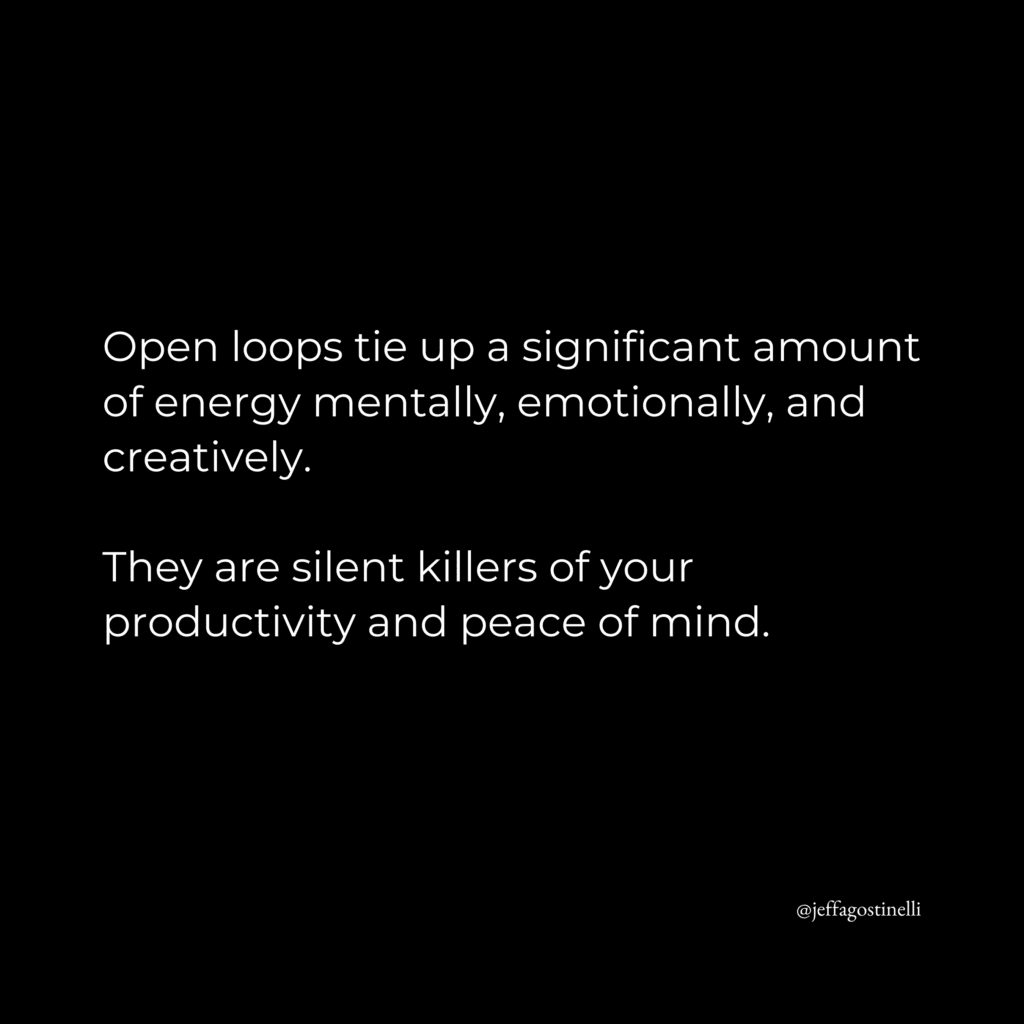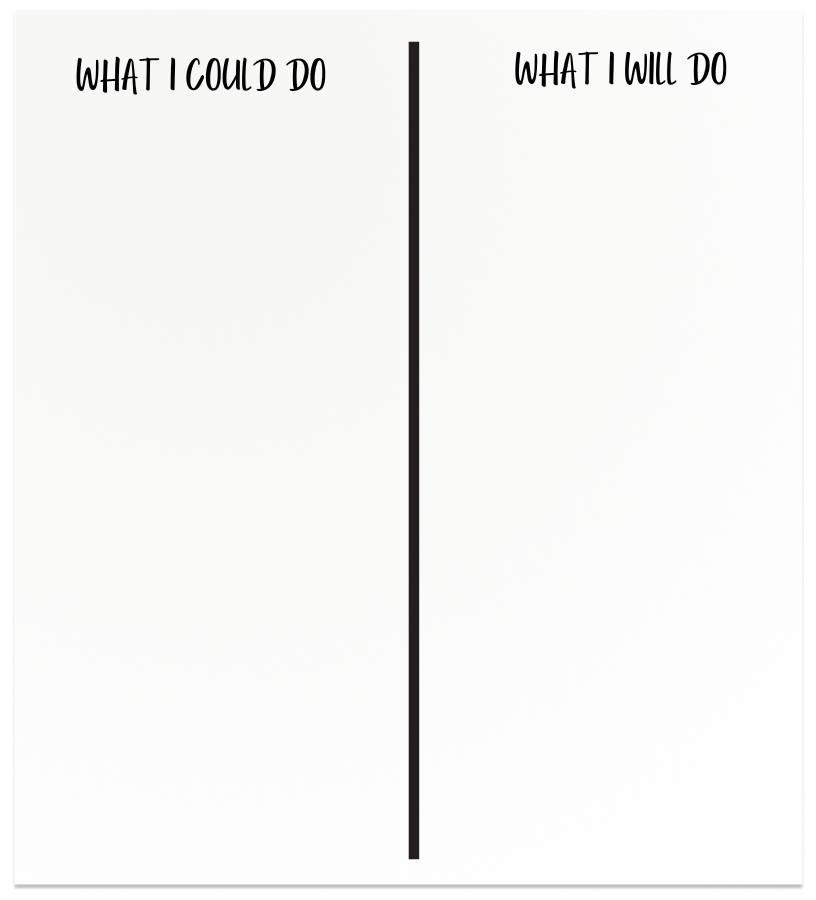At any given time we have two paths of focus.
The immediate
The long term
And they’re in constant competition.
Doing what needs to get done today
All while making sure that you’re building for what’s to come.
For most coaches, the immediate almost always takes the front seat over the long term.
The immediate usually looks like bringing new sales in the door.
The long term usually looks like more sustainable systems and content channels that take a little longer to establish.
Not to mention any products, programs, or downloads that you want to offer in the near future.
The short-term “fix” vs the long-term “build”.
What if I told you that this habit is costing you?
While it’s essential to focus on both paths in the business, the fact that they are so different lends itself to the cost of task switching.
Where everything eventually feels like too much.
Now, doing too much isn’t necessarily a bad thing.
If you’ve read my previous stuff, you’re probably thinking this is directly against what I’ve said in the past.
And it is.
Kind of…
It’s not that you’re doing too much necessarily. It’s that you’re not bringing activities to completion.
Leaving projects suspended in limbo.
Some getting done.
While others just lose steam.
Focusing on the immediate…
- Creating content
- Getting calls booked
- Delivering on what you’ve already sold
- Getting in front of more qualified buyers
At the cost of the long term…
- Refining your coaching program and resources
- Creating opt-ins to test what people want
- Launching a program
- Having a proper sales page that get’s coaching applications
- Creating YouTube videos
- Starting or iterating your newsletter
These long-term activities typically produce more long-term nurture but require more time and energy to do. In many ways, they also take time away from the more immediate income-generating activities.
Do you see how these are in constant competition?
They don’t have to be though.
The good news…
There’s a practice that makes both paths more fruitful AND predictable.
Closing loops.
Bringing things to completion.
Completing cycles of action.

Almost everybody underestimates how much energy open loops occupy.
Until they’re closed.
Typically expressed in surprise…
I had no idea that was taking up so much of my mental and emotional energy
It’s not that you’re not organized.
Or even that you don’t have the structure or systems set up.
In this article, I’ll break down what keeping loops open is costing you, how to start completing cycles of action, and ways to prioritize a closed-loop mindset so you can free up more energy, get clarity on what’s most important, and finally complete cycles of inaction to powerfully move forward.
Why you end up with too many cycles of incomplete action
No one sets out to leave things undone.
Part of the equation is that we get distracted.
Some of that is internal.
And some external.
Instead of sticking to what we say we’re going to do, we see 7000 other things that could solve our problem.
We give into…
- The need for instant gratification
- Taking shortcuts, thinking that this new thing is better than or faster than our current way of operating
- Misplaced expectations about what we’ll gain from a strategy or new offer
- The fear of missing out on what seems like a good opportunity or new trend.
- Thinking the grass is greener on the other side… that there’s an easier way than what you’re currently doing
- To save time (even though it usually ends up wasting it)
- Thinking we need to do what everyone else is doing even if it’s nowhere near a fit for our values or business model
It’s when you can get these tendencies in check that you start to stay in your lane, trust your intuition, and march to the beat of your own drum.
It all comes down to a shift in focus.
What to focus on instead
The two paths that I mentioned at the beginning of this article that are always in competition need to come into right relationship.
When new clients start with me we always focus on both paths.
- The short-term gains that bring revenue in the door
- The long-term strategies that nurture interested buyers
The reason I started doing this was because I struggled with this myself.
Getting so entrenched in the day-to-day of acquiring new clients that zooming out to shift my focus to working on the business or even being ultra consistent with videos for YouTube or creating these articles slowed down business coming in the door.
I would notice this every time I went to focus on long-term projects or working on the business instead of just IN the business.
And without fail, every time I stopped doing shit that doesn’t scale things would slow down and I’d have to shift my focus back to the more manual short-term activities that brought money in the door.
A good friend and coach of mine used to say…
Don’t stop the presses.
He was talking about the activities that produce income.
Every time I would shift my attention from one offer to another or from short-term focus to long-term focus (without having the proper systems set up first) things would slow down significantly.
Part of keeping the scales in balance is knowing what to do.
And the other is being prepared enough that this doesn’t happen.
It’s as simple as having a few set up as well as a small set of strategies to get back into balance when things get out of whack.
Through this process, you’ll start to see what’s really going on with the projects you currently have and you’ll also start to see that there’s only one thing that poses a threat to your productivity.
Your competing interests.
The solution isn’t to do less.
It’s to finish more.
Closing loops and completing cycles of action.
This is the art of doing too much.
How to Successfully Bring Projects to Completion
“Most people overestimate what they can do in one year and underestimate what they can do in ten years.”
– Bill Gates
This is true because we almost always underestimate how many steps are involved with a project.
This is also the reason why so many New Year’s resolutions get tossed in the trash come March (or sooner).
Partly because of poor planning (which we’ll address a bit below) and partly because one or more of The Big 4 Fears of creating change sets in.
Depending on the size of these projects and how many people you have on your team, that is going to dictate how effective you can be in these different areas.
Having fewer things that you bring to completion will get you so much farther than bouncing from one thing to the next and dragging everything out.
There are two things here.
- The principles that make this all work.
- And the path to completion – the act of closing loops.
Let’s look at the principles first.
8 Laws of Doing Too Much
- Done is better than perfect – Bring projects to completion and know that you can always iterate. Trying to get it perfect is only delaying the process. Aim for good enough and improve over time.
- Prioritize speed of implementation – There will be times when action is required to see what’s next. If it seems like the path ahead is unclear, halting progress, take the next best step to gain clarity.
- See the full picture (or as much as you can) – Your activities today should reflect the bigger picture. When you have a proper perspective, it’s easier to see what’s important and what is just busy work.
- Completion can mean elimination – Not every project is meant to last. If it’s not working or producing results, eliminate it. That may mean pausing the podcast, not creating video to focus on writing, or shifting from 1 to 1 coaching to DIY resources.
- If it doesn’t fit with your goals, it’s a no – As you get more established you will say no far more often than you say yes. When saying no to something that doesn’t fit, you’re saying yes to what does.
- Focusing on both paths (immediate and long-term) – Being aware of both is often enough. You’ll start seeing when you’re too focused on non-income-producing activities and when to shift.
- Know YOUR strategy (so you don’t get sucked into other people’s) – Feeling confident that your chosen path is the one for you is very important. If that’s YouTube awesome. If it’s having a potent newsletter and nurturing your list, excellent. Know your strategy and double down on making that the best thing you do.
- Be decisive – it’s better to fully commit and put your blinders on than it is to hop from one thing to the next and perpetuate the incompleteness of things. That requires decisive action. It’s not a passive process.
These 8 Laws will filter out most of the noise of the external world.
Now, the actual process of closing loops almost always starts with one very underrated activity.
The brain dump
If you regularly deploy this practice you know the potency it carries.
If not, it’s a critical first step.
I use this as a curative practice, helping to put overwhelm in its place when the build feels like too much.
I also use this as a planning tool when I have a lot of thoughts but am unclear about what to do first.
It’s as simple as grabbing a blank piece of printer paper and just listing out everything you’re thinking.
With one small modification.
Create two columns.
On the left…
What I could do.
And on the right…
What I will do.

This gives you the landscape to get out all the ideas of what’s possible while creating a path to execute on the most important first.
Sometimes it’s a logical process, getting everything out on paper and thinking through what the next best step is.
And other times it’s an intuitive process, getting everything on the page and seeing what stands out.
Then take action from there.
In this particular instance, this exercise is specifically focused on closing loops.
So when you have a clear picture of the projects and associated actions, you’ll want to ask yourself this one question.
What’s needed to bring this project to completion?
Then answer it.
Knowing what needs to be done to complete the cycle of action is what closing loops is all about.
It’s less about finishing everything in its entirety and more about seeing the full path ahead.
This takes the hypervigilance out of the pursuit.
When you know what’s required to close loops, even if you can’t execute on it right away, you’re mind can now relax because it’s clear what needs to happen.
Getting it all out and resting on the fact that it’s necessary to operate on both paths, the immediate and the long term will give you a container to operate in.
As you start closing loops and bring more projects to completion you’ll likely get addicted to the process.
For me and many of my clients, this one activity has been a total game changer for our productivity and peace of mind.
This is The Art of Doing Too Much.
Until next time,
Jeff Agostinelli
Get these articles delivered right to your inbox plus additional insights I only share in email
For coaches and creators who want to master their message and take their business to the next level